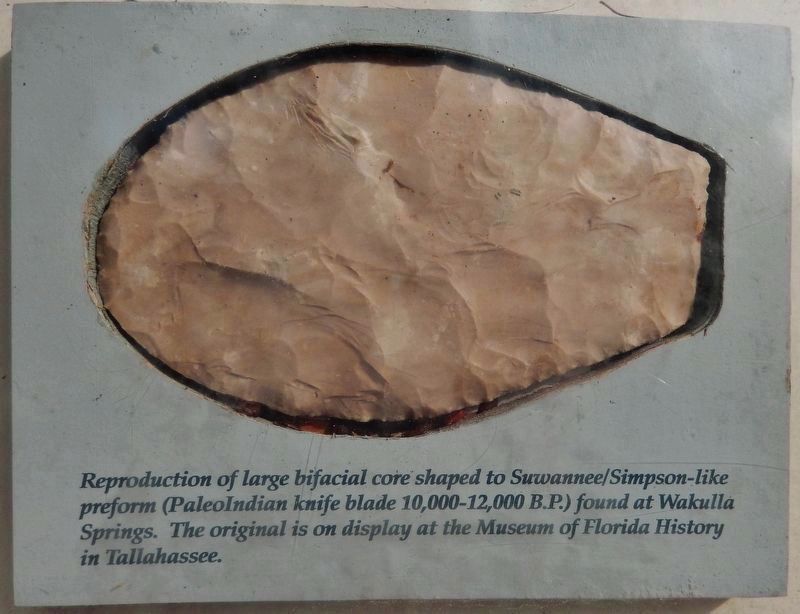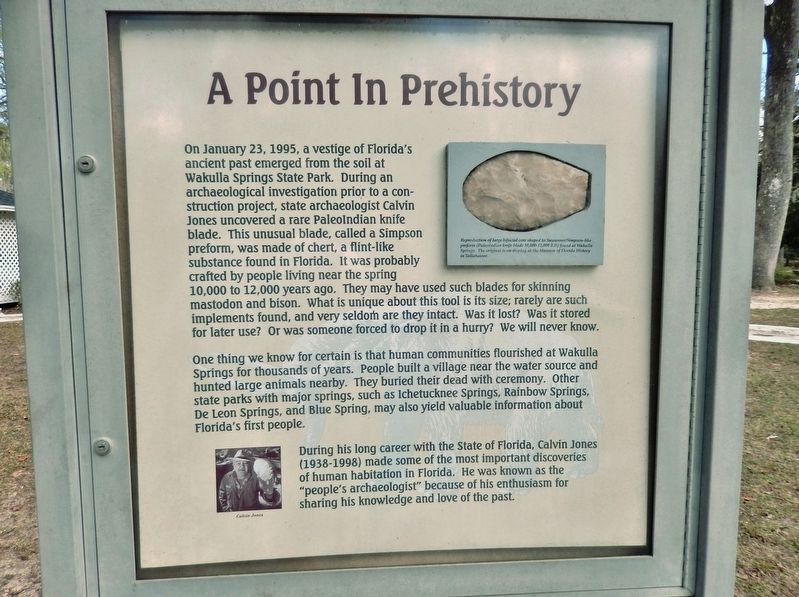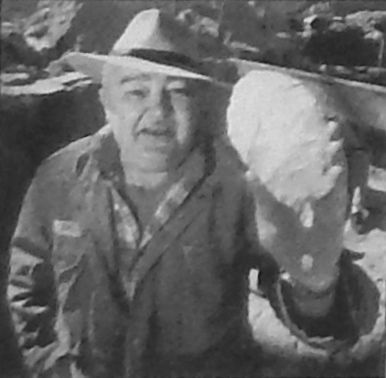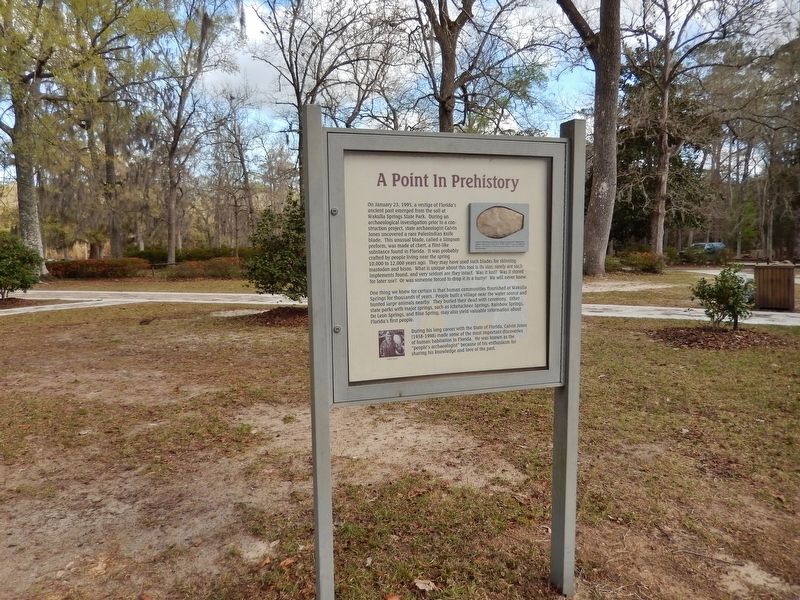Wakulla Springs in Wakulla County, Florida — The American South (South Atlantic)
A Point in Prehistory
On January 23, 1995, a vestige of Florida's ancient past emerged from the soil at Wakulla Springs State Park. During an archaeological investigation prior to a construction project, state archaeologist Calvin Jones uncovered a rare Paleolndian knife blade. This unusual blade, called a Simpson preform, was made of chert, a flint-like substance found in Florida. It was probably crafted by people living near the spring 10,000 to 12,000 years ago. They may have used such blades for skinning mastodon and bison. What is unique about this tool is its size; rarely are such implements found, and very seldom are they intact. Was it lost? Was it stored for later use? Or was someone forced to drop it in a hurry? We will never know.
One thing we know for certain is that human communities flourished at Wakulla Springs for thousands of years. People built a village near the water source and hunted large animals nearby. They buried their dead with ceremony. Other state parks with major springs, such as lchetucknee Springs, Rainbow Springs, De Leon Springs, and Blue Spring, may also yield valuable information about Florida's first people.
During his long career with the State of Florida, Calvin Jones (1938-1998) made some of the most important discoveries of human habitation in Florida. He was known as the "people's archaeologist" because of his enthusiasm for sharing his knowledge and love of the past.
Topics. This historical marker is listed in these topic lists: Anthropology & Archaeology • Native Americans • Parks & Recreational Areas. A significant historical date for this entry is January 23, 1995.
Location. 30° 14.059′ N, 84° 18.087′ W. Marker is in Wakulla Springs, Florida, in Wakulla County. Marker can be reached from Wakulla Park Drive, half a mile north of Wakulla Springs Road (State Highway 61). Marker is located along the walkway, just north of the Wakulla Springs Lodge, within Edward Ball Wakulla Springs State Park. Touch for map. Marker is at or near this postal address: 550 Wakulla Park Drive, Crawfordville FL 32327, United States of America. Touch for directions.
Other nearby markers. At least 8 other markers are within 8 miles of this marker, measured as the crow flies. Wakulla Springs Archaeological & Historic District (within shouting distance of this marker); Edward Ball (within shouting distance of this marker); Supplies Are Low (approx. 4 miles away); Old Wakulla County Jail (approx. 6 miles away); Old Wakulla County Courthouse (approx. 6.1 miles away); Tallahassee - St. Marks Railroad (approx. 7.6 miles away); The City of St. Marks (approx. 7.9 miles away); Fort San Marcos de Apalache (approx. 7.9 miles away). Touch for a list and map of all markers in Wakulla Springs.
Also see . . .
1. Archaeology dig near Wakulla Springs Lodge. Tallahassee Democrat website entry:
Florida's first transplants arrived some 15,000 years ago. They may have lived around what

Photographed By Cosmos Mariner, March 10, 2015
2. Marker detail: Paleoindian Knife Blade Reproduction
Reproduction of large bifacial core shaped to Suwannee/Simpson-like preform (Paleoindian knife blade 10,000-12,000 B.P.) found at Wakulla Springs. The original is on display at the Museum of Florida History in Tallahassee.
2. B. Calvin Jones. Wikipedia entry:
B. Calvin Jones was an American archaeologist and discoverer of historic sites in Florida. He is listed as a Great Floridian. (Submitted on July 18, 2020, by Cosmos Mariner of Cape Canaveral, Florida.)
Credits. This page was last revised on February 16, 2024. It was originally submitted on July 16, 2020, by Cosmos Mariner of Cape Canaveral, Florida. This page has been viewed 231 times since then and 32 times this year. Photos: 1. submitted on July 17, 2020, by Cosmos Mariner of Cape Canaveral, Florida. 2, 3, 4, 5. submitted on July 18, 2020, by Cosmos Mariner of Cape Canaveral, Florida.



